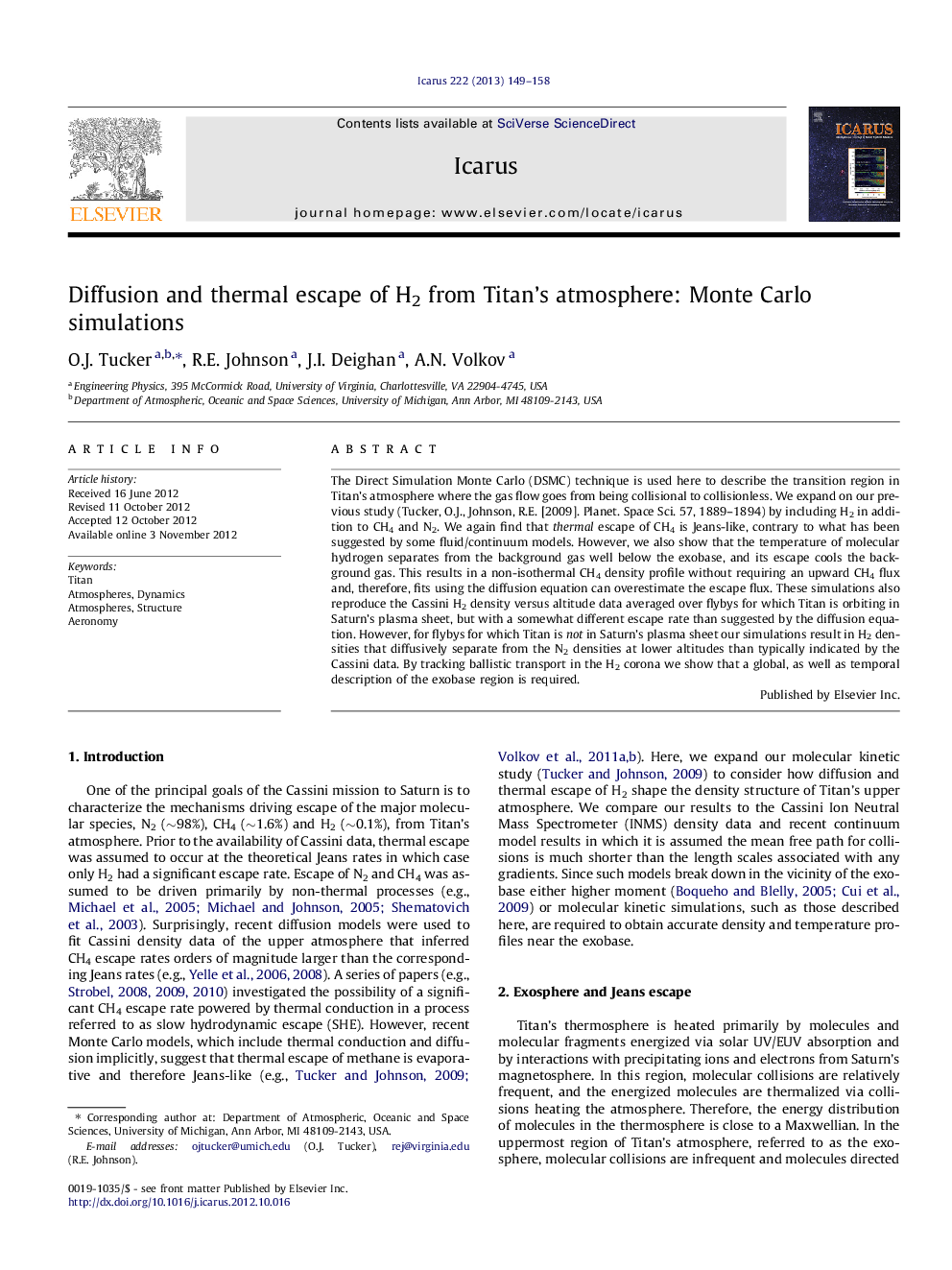| Article ID | Journal | Published Year | Pages | File Type |
|---|---|---|---|---|
| 1773725 | Icarus | 2013 | 10 Pages |
The Direct Simulation Monte Carlo (DSMC) technique is used here to describe the transition region in Titan’s atmosphere where the gas flow goes from being collisional to collisionless. We expand on our previous study (Tucker, O.J., Johnson, R.E. [2009]. Planet. Space Sci. 57, 1889–1894) by including H2 in addition to CH4 and N2. We again find that thermal escape of CH4 is Jeans-like, contrary to what has been suggested by some fluid/continuum models. However, we also show that the temperature of molecular hydrogen separates from the background gas well below the exobase, and its escape cools the background gas. This results in a non-isothermal CH4 density profile without requiring an upward CH4 flux and, therefore, fits using the diffusion equation can overestimate the escape flux. These simulations also reproduce the Cassini H2 density versus altitude data averaged over flybys for which Titan is orbiting in Saturn’s plasma sheet, but with a somewhat different escape rate than suggested by the diffusion equation. However, for flybys for which Titan is not in Saturn’s plasma sheet our simulations result in H2 densities that diffusively separate from the N2 densities at lower altitudes than typically indicated by the Cassini data. By tracking ballistic transport in the H2 corona we show that a global, as well as temporal description of the exobase region is required.
► Direct Monte Carlo simulations (DSMCs) of thermal escape from Titan’s atmosphere. ► Our DSMC results are compared to diffusion models and Cassini data. ► Thermal escape of CH4 and H2 from Titan is similar to Jeans escape. ► Cooling by H2 escape will results in the CH4 density profile being non-barometric. ► A global and temporal description is required to model Titan’s upper atmosphere.
